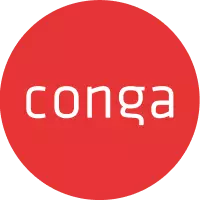
From ownership to access: the rise of subscription-based models

The evolving landscape of product and service sales
The way companies sell products and services is continuously evolving. In a relatively short period, we have shifted from traditional on-premises software solutions to cloud-based software as a service (SaaS) offerings. This trend has been further expanded by the emergence of infrastructure as a service (IaaS) and platform as a service (PaaS), which offer varying levels of flexibility and control for businesses.
Adapting to these evolving sales models is essential for long-term survival. The disappearance of half of the Fortune 500 companies over the past two decades highlights the consequences of focusing solely on transactions rather than building strong, long-term customer relationships.
Key success factors to succeeding as a digital business
Companies that have thrived in this changing landscape share three key characteristics:
- Prioritizing recurring revenue: They recognize that repeat purchases and subscription models are the foundation of sustainable growth.
- Long-term customer relationships: They prioritize long-term thinking and invest in building and nurturing strong customer relationships.
- Relentless innovation: They consistently adapt and evolve their offerings to meet shifting customer needs and emerging market trends.
By embracing these principles, companies can position themselves for success in an environment where anything is now a service.
The rise of XaaS (anything as a service)
The XaaS model encompasses a wide range of offerings, from traditional IT services to more unconventional ones. Understanding the nuances between these models is essential for businesses to select the most suitable option.
- Infrastructure as a service (IaaS) provides the foundational building blocks of IT infrastructure, such as computing power, storage, and networking. Examples include Amazon Web Services (AWS), Google Cloud, and Microsoft Azure.
- Platform as a service (PaaS) offers a ready-to-use development environment, including tools, frameworks, and middleware. Examples include Heroku, AWS Elastic Beanstalk, and Google App Engine.
- Software as a sService (SaaS) delivers applications over the internet on a subscription basis. Examples include Salesforce, Dropbox, and HubSpot.
- Desktop as a service (DaaS) provides virtual desktops accessible from any device. Examples include Amazon WorkSpaces, VMware, and Citrix.
- Monitoring as a service (MaaS) offers real-time monitoring and analytics for IT systems. Examples include Dynatrace, LogicMonitor, and Pingdom.
- Communication as a service (CaaS) delivers unified communications and collaboration tools. Examples include Vonage, RingCentral, and Zoom.
- Content as a service (CaaS) provides access to digital content, such as images, music, and videos. Examples include Shutterstock, Spotify, and Netflix.
- Food as a service (FaaS) connects customers with local restaurants or provides meal kits for home cooking. Examples include Grubhub, Postmates, and HelloFresh.
- Clothing as a service (CaaS) offers subscription-based clothing services, giving customers a curated selection of clothing items. Examples include Le Tote, Nuuly, and The RealReal.
- Fitness as a service (FaaS) provides fitness equipment, classes, or personalized coaching. Examples include Peloton, Fitbit, and ClassPass.
Like the shift in software delivery, we also see a growing trend toward equipment as a service (EaaS) models. Rather than purchasing expensive equipment outright, companies can lease it and avoid tying up capital in assets. This also shifts the responsibility for maintenance and support to the original equipment manufacturer (OEM) or service provider.
- Industries that are increasingly adopting EaaS include:
- Heavy equipment such as construction and mining
- Medical devices like MRI machines, CAT scanners, and robotic surgical machines
- Lab equipment including electron microscopes, centrifuge, and spectrophotometer
- Manufacturing machines like sheet metal bending machines, punch laser machines, assembly, and welding robots
- Oil and gas for their upstream drilling equipment
- Transportation including trucks, cars, and trailers
Characteristics of EaaS candidates
Common characteristics of businesses or products well-suited for an EaaS model include:
- High cost and complexity: equipment that requires significant investment and specialized knowledge
Extended sales cycle: typically involves a longer decision-making process due to the complexity and cost of the product - Support services: often includes additional support services like training, technical assistance, and ongoing maintenance
- Regular maintenance requirements: equipment that requires regular servicing or calibration to function optimally
It would not be surprising to experience resistance to the subscription model in more traditional industries with extremely expensive equipment, such as the heavy equipment industry.
Companies and customers in this sector are not used to the subscription model and typically rely on buying, leasing, or renting.
Most customers are used to owning the equipment rather than paying for usage. Implementing a subscription model will require a significant shift in customer mindset and acceptance. The recent contracting economy may assist in this, where suppliers can continue to deliver their equipment, and customers use it at a much lower cost.
For the OEM, adding a subscription service for physical goods will also require a significant effort. It will add complexity to their traditional business model, and agreements must be updated to include maintenance, repair, and service. Also, the coordination to provide these services will be managed differently in a subscription model.
All these challenges aside, there is also a huge upside potential. Companies have the opportunity to gain customers that OEMs could not reach before, and being ahead of the competition in offering this flexibility may pay off in the long run.
Exploring the elements of the EaaS model
Let's walk through the quote to cash (QTC) process in an EaaS scenario, along with all the applications involved.
Customer relationship management (CRM)
Most companies have a CRM system in place. This is typically the source for all commercial interactions with their customers: account management, aead and opportunity management, and tons of reporting capabilities to control and analyze the data in CRM. From the CRM application, users can launch the quote process. For companies that manufacture complex products and services, this quote process starts in an integrated CPQ solution.
Configure price quote (CPQ)
The selling process for equipment manufacturers is typically complex and time-consuming, especially when the customer can select from many options and variations for the final product and services. Think about a punch/laser machine for sheet metal, a welding robot, or an electro-hydraulic servo-synchronous press brake.
A modern CPQ application like Conga CPQ seamlessly integrates with the CRM application. As a minimum, the CPQ application should be able to handle:
- Catalog management to organize the product and service offerings
- Product rules at the product level and quote level
- Price list(s)
- Price rules
- Tiered pricing
- Quote document generation
In addition to these minimum capabilities, the following functionality also should be available in a CPQ solution. However, in some cases, the CPQ application uses a third-party service to fulfill some of the capabilities:
- Guided selling
- Product comparison
- Deal management
- Price waterfall and price analytics
- Price optimization
- Asset-based ordering (ABO) and all associated rules and pricing
- Commercial approvals and technical approvals (line level and quote level)
- Multi-currency and multi-language support
- Collaboration between different teams (engineering, sales)
- Electronic signature capturing
- Visualization of the configured product
For some of the equipment manufacturers (project-based), the CPQ solution should also be able to handle product customization.
The CPQ solution should also be able to handle multiple price types (recurring, one-time, metered), the term, and some additional attributes or options that come with EaaS—like required operation monitoring devices and periodic maintenance services.
Once the quote is accepted and transformed into an order, multiple other systems need to be informed about the new order:
- ERP or order management system
- CLM system
- Billing system
Let’s review each of these systems and explain their role in the EaaS process.
Enterprise resource planning (ERP)
From an ERP/order management perspective, there is not much difference between a machine built for a customer who acquires the machine to own it and a customer who uses it through a lease agreement.
Contract lifecycle management (CLM)
In an EaaS process, a lease is called a subscription, and the contract that CLM handles is extremely important. The contract will describe the obligations of the customer/lessee. Because the OEM/lessor is not in possession of the equipment, the contract needs to spell out the rules for subscribing to the equipment in detail.
Examples include:
- Periodic maintenance
- Operation of the equipment within the design parameters
- Reporting of usage (hours, mileage, movements, etc.)
Conga CLM is an robust contract management tool that can easily handle all these contract requirements—and more.
Billing system
The billing in an EaaS situation can be complex. A fixed amount and a variable amount are based on some metered value like time, distance, number of movements, number of days used, etc. Conga Billing is fully integrated with Conga CPQ, and both solutions are part of Conga’s holistic revenue management platform.
Internet of Things (IoT)
IoT is not an application like CPQ, CLM, and ERP. In this use case, it is a technology used for communication from the equipment to the billing system and the CLM system. Billing involves the usage of the equipment. For CLM, IoT can provide data for obligation management:
- Did the customer/lessee use the equipment within the design parameters?
- Is all the necessary maintenance performed?
The goal is to have this automated so the CLM system can warn the OEM (the equipment owner) when a contract is not respected.
There is also a great advantage for the equipment's OEM: many machines are already equipped with these devices, delivering tons of accurate machine data and operating insights to the OEM or service provider. Machine learning and AI algorithms provide feedback for product improvement but also present alerts and information that prevent systems from breaking down, which could be expensive and inconvenient for the equipment user/operator.
Turning machine data into contract intelligence
All these technologies and applications exist in the real world, but you need a trusted system integrator to make them work for your organization in an automated and synchronized way. However, it is not only about the applications. It is also important that the processes are well-defined and will work in your organization.
Conga constantly innovates their applications to better align with their customers' needs. Examples include Conga's CPQ, CLM, and Billing applications, which are CRM and ERP agnostic. Other more detailed examples are performance improvements on large and complex configurations and quotes, better obligation management, and AI assistance in the CLM process.
At Synthesis, we have experience in all these applications and the integrations that come with them, and we can help you transition. Our Platinum partnership with Conga means we have the right solution ready for you.


